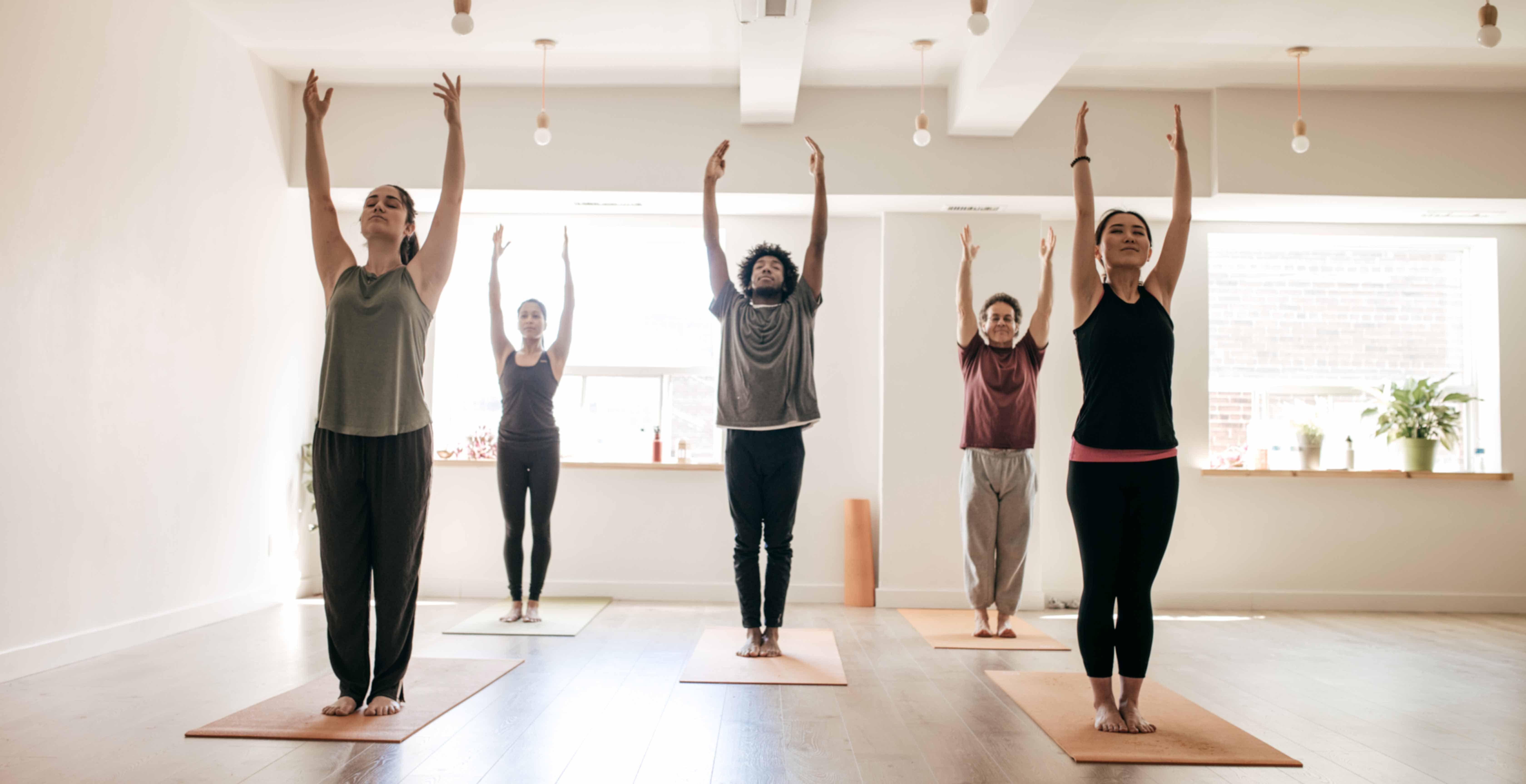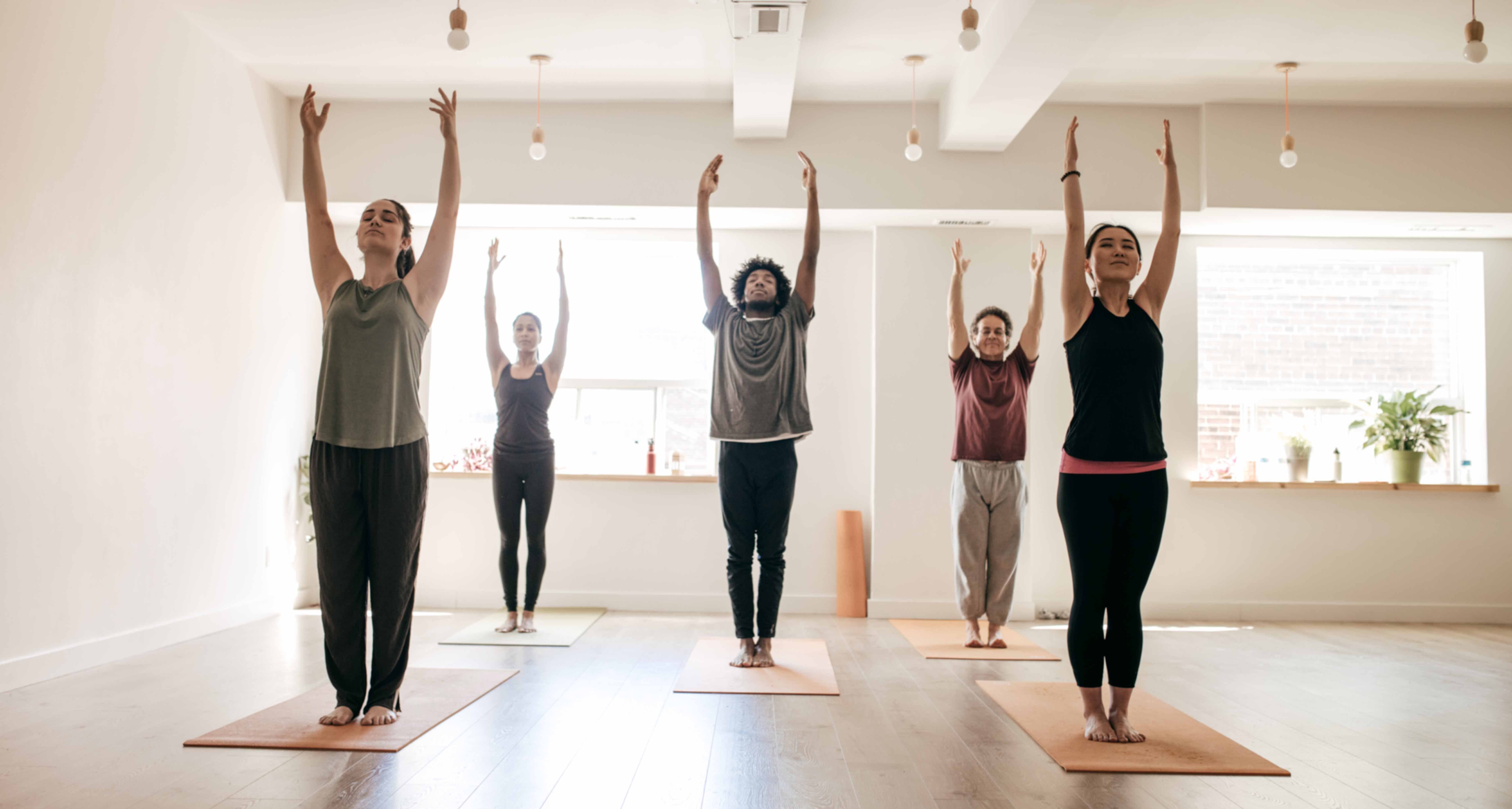Why Yoga and Cardio Should Be a Part of Your Fitness Routine


Exercise can be a powerful way to improve your health. But depending on your goals, different types of exercise may have different benefits—especially if you’re predisposed to conditions like heart disease.
For instance, cardiovascular or aerobic exercise has been shown to strengthen the heart muscle and make it more efficient at pumping blood, as well as help lower other heart disease risks such as cholesterol levels and blood pressure.
That’s great—but what additional benefits might occur if someone with heart disease symptoms did aerobic exercise and another kind of activity, such as yoga?
The Study: Cardio + Yoga
When 720 patients previously diagnosed with heart disease were separated into separate groups—those who did aerobic activity, those who practiced yoga, and those who engaged in both aerobic exercise and yoga—all three groups experienced significant heart health benefits. Think: reductions in blood pressure, total cholesterol, triglycerides, LDL, weight, and waist circumference. But the group that did both aerobic exercise and yoga experienced the best results—specifically reductions twice as great as those experienced by the other groups, according to the research presented at the 8th Emirates Cardiac Society Congress in collaboration with the American College of Cardiology Middle East Conference October 19-21, 2017, in Dubai.
In other words, both aerobic activity (like running, biking, rowing, and other cardio) and yoga can help improve heart health, but when you do both, you might reap even more of those benefits.
“Yoga can be beneficial for your heart—this study and prior studies have shown that,” says Martha Gulati, MD, the division chief of cardiology for the University of Arizona College of Medicine in Phoenix and editor-in-chief of CardioSmart.org. Yoga helps to relax blood vessels and that can lower blood pressure and heart rate, and this increases aerobic exercise’s benefits. Yoga lowers blood pressure and increases the overall feeling of relaxation, which contributes to your aerobic performance, Dr. Gulati says. “Talk about full circle fitness right there!”
Another indirect advantage, particularly for people with heart disease who may be nervous about exercising: “Yoga can be a gentle activity to get you started,” Dr. Gulati adds.
Putting Cardio and Yoga Together
What’s the best way to combine these two forms of exercise? Consider that the American Heart Association’s (AHA) advises that people trying to improve their cholesterol levels and blood pressure perform 40 minutes of moderate to intense exercise three to five times a week. “My recommendation is to move, be active, or do something every day to raise your heart rate and make your heart pump its blood and be pushed a little,” says Dr. Gulati. This advice should help you reach the recommendations.
As for the yoga, Nieca Goldberg, MD, cardiologist and medical director at the Joan H. Tisch Center for Women’s Health at NYU Langone in New York City, recommends practicing it at least twice a week, whether in a studio or a session at home using a video or app. Fortunately, most yoga disciplines — with the exception of hot of Bikram yoga — are safe for those individuals with heart disease. (If you have any doubts about the form of yoga you want to pursue, check with your health-care professional.)
Something to keep in mind when planning your activity routine: Yoga practice doesn’t count toward your weekly exercise time since most yoga disciplines do not raise your heart rate enough to produce moderate intensity for a sustained period of time, according to the AHA.
